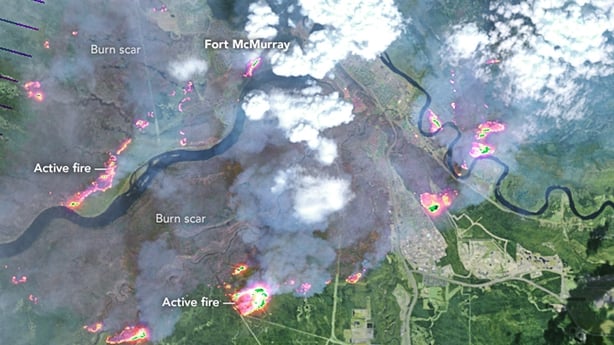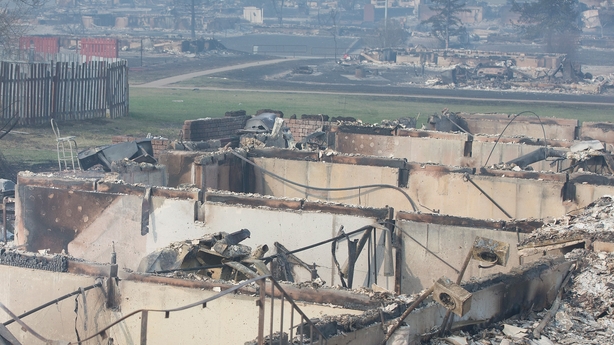A raging Canadian wildfire that forced the evacuation of the Alberta oil town of Fort McMurray intensified today, helped by hot, dry weather, with police escorting a fresh convoy of evacuees out of the region.
Wind-whipped flames roaring through forests and brush parched by a spring heat wave have engulfed nearly 250,000 acres in western Canada's energy heartland since erupting last Sunday.
The blaze, the largest of 40 wildfires burning across the province of Alberta, has forced some 88,000 residents, the entire population of Fort McMurray, to flee for safety, and has threatened two oil sands production sites south of the city.
At least 10 oil sand operators have cut production due to evacuations and other emergency measures that complicated delivery of petroleum by rail, pipeline and highway.
With winds yesterday pushing the fire's leading edge to the northeast, away from town and into open timber, authorities said the blaze was expected to rapidly expand its footprint even as the threat to populated areas waned.

Firefighters continue to battle the raging Fort McMurray wildfire in Canada with 88,000 residents now evacuatedhttps://t.co/a9lkwqV2oJ
— RTÉ News (@rtenews) May 7, 2016
Chad Morrison, an official with the Alberta government wildfire unit, told reporters the blaze was likely to double in size by late today, the end of its first week.
The full extent of property losses in Fort McMurray has yet to be determined but authorities said some 1,600 structures were believed to have been destroyed.
One analyst estimated insurance losses could exceed C$9 billion.
Oil production cut
About a third of Canada's oil production has been shut by the conflagration, according to a Reuters estimate.
South of Fort McMurray, CNOOC Nexen's Long Lake oil sands facility and Athabasca Oil's Hanging stone project were in danger of being overrun by flames, emergency officials reported. Both facilities have been evacuated.
Mr Morrison said fire was "at the gates" of the Long Lake installation, but shifting winds would likely spare the facility. He added that many oil facilities in the region had private fire fighting forces in place.
There have been no known casualties from the fire itself, but fatalities were reported earlier this week in at least one car crash among the evacuees.

As of yesterday, more than 1,200 fire fighters were arrayed against blazes across the province, backed by more than 100 helicopters and over two dozen airplane tankers equipped to drop water and fire-retardant chemicals on the flames.
But the sheer magnitude and intensity of the Fort McMurray fire mostly defied all efforts to contain it.

